As a young soldier, while on leave, I stayed with a Mr Cowan near Hastings in NZ. He was a retired RAF Wing Commander who had been based in Malta in WWII during the Italian and German bombing campaign. He told me a story that has stayed with me. He described it as the bravest thing he had ever seen. An unexploded German time bomb had landed beside their last undamaged hanger. A flight sergeant loaded it on to a forklift and drove it of to the local rubbish dump.
Thursday 27 September 2018
Leaving Italy on Ryan air was an experience in itself. These guys are organised in making every minute count when it comes to getting aircraft back in the air. We were called to board then stood on a stairway for several minutes before heading out onto the tarmac where we stood and watched the passengers disembark from the just-landed plane. As soon as they were all off on we went. Very efficient!
Landing in Malta around 1pm a driver from La Falconeria Hotel picked me up for the short trip into Valletta. The route took us around the north side of the fort (yes this town of 5,500 odd people is a fort). Arriving at the hotel I was greeted by really helpful and friendly staff and soon settled into a room. As Sylvia was flying in from France later in the evening I went for a stroll around the town or fort. The place is outstanding to say the least and steeped in some of the most interesting history I have come across.
Valletta, originally a rocky peninsula jutting into the harbour, has long been of strategic importance. After being attacked by the Ottomans in the early 1500s, they started in 1566 building the tunnel and drainage systems and bastions. By the early 1600 it had become a sizeable city. To try do it justice with the help of wikipedia here is a summary of the history of the 316 km2 country with a population of 432,089 this year.
First occupied by Neolithic farmers, probably from Sicily, around 5900 BC, a combination of global warming (probably not man-made) and bad farming practices ran them out of food and they left.
Repopulated again from Sicily around 3850 BC this group built the temples, one of which, the Ggantija temple in Gozo, is still standing today and is believed to be the oldest free standing building in the world. These guys lasted about 1500 years before being driven out due again to global warming and drought, at which point this culture too disappeared.
Various Bronze Age people then occupied the island until 800 BC when the Phoenicians possibly arrived. In 400 BC it became a trading post linking Sicily and Italy to what is now Libya. From 250 BC to 500 AS the Romans ruled in one form or another. In 535 AD it was integrated into the Byzantine province of Sicily. There is speculation the Greeks rued for a short time around 800 AD.
In 870 AD Muslims from North Africa ruled and after a siege, many bloody battles and the annihilation of the population the country lay empty for some time until in 1048 it was resettled by a Muslim community and their slaves. In 1091 Sicily took over again. Over the next 440 years it was sold and resold to various feudal lords until in 1479 it became part of the Spanish empire.
In 1530 the island was handed to the to Knights of St John, who ruled for the next 275 years. In 1798 Napoleon rocked up and stayed for six days, putting in his administration system with the French ruling for a couple of years until in !800 it became a British protectorate.
In 1964 Malta gained independence and in 2004 Malta became part of the EU.
Friday 28 September 2018
After a leisurely breakfast at the hotel we took a stroll up to the top of town and jumped a bus to the old city or fort of Mdina, about 10kms west of Valletta. Even outside Valletta the architecture is pretty amazing with rows and rows of stone buildings, most of which have the famous enclosed Maltese balconies cantilevered out from where the window would be. A stone aqueduct still stands in places that once bought water to Valletta. As we headed west we came across lots of small, arid looking farming plots, many surrounded by stones that had been stacked into fences over many years.
Built on the edge of a cliff, Mdina is quite spectacular with a deep moat on the south side with a bridge to the gate.
Entering the old city we were confronted by a maze of alleys, small squares and a large cathedral. We came across some people dressed in Medieval costumes who invited us into a museum about the Knights of St John. Originally founded in Jerusalem in 1070 as a Catholic military order they roamed Europe leading the Christian crusades eventually arriving in Malta after the fall of Rhodes. They became famous in Malta for repelling the Turks, who turned up with forty thousand men.
The Knights having had word of the invasion harvested all the crops even those not ripe then poisoned many wells to deprive the invaders of food and water. The Turks overran a fort near Valletta then a bare peninsular. They cut the heads off the Knights they captured and floated them on crosses in the harbour. The knights then cut the heads of their Turk prisoners, loaded them into canons and fired them into the Turk camps. Apparently this had quite a demoralising effect on the Turk soldiers. Eventually the Turks withdrew from the island having lost over two thirds of their troops.
From both the fort walls and the restaurant we visited for lunch outside the walls we had great views of the local farmland.
We then headed by taxi to the Hagar Qim Temples out by the coast. These are the oldest temples in Malta and they reckon the oldest man made structures in the world. Built back around 3800 BC with no written language and no steel tools they managed to build these structures, which included door frames chiseled out of stone. In 1995 this and four other sites on Malta were recognised by UNESCO as world heritage sites. They have had structures built over them similar to the ones we saw over the monolithic churches in Ethiopia recently to protect them from the elements.
The two sites here consist mainly of the original stone and some that has been recreated. there is also a museum which takes one through the history of the people who occupied the island at that time.
After the second temple we strolled across the arid land to look at one of the eight surviving watch towers, thirteen of which were were built by the Knights between 1658 and 59 to warn of coastal attacks.
A bus took us back to Valletta where we sat on the deck at the hotel enjoying a quiet evening and a view over the city.
Saturday 29 September 2018
After another great breakfast at the hotel we headed for a stroll around Valletta heading to the northeast side of the peninsular overlooking the Marsamxett Harbour. Around here there is simply fort after fort, all as if they are keeping an eye on each other. Looking across at Fort Manoel on another peninsular jutting into the harbour to the left of which were pleasure boats and more solid looking buildings. To the right on a coastal peninsular are modern looking apartment type of buildings looking somewhat out of place.
Rounding the bottom of the peninsular we passed the Malta War Museum and then had great views across the Grand Harbour, the far side of which is also lined with forts.
We then strolled through the streets heading up to the top of the town to view the noon firing of one of the canons. There is something really neat about this town and the way the buildings look, all built of lime stone with balconies – most enclosed with timber and glass and painted in varying colours – protruding from them.
Arriving at the canons we were greeted by a young man in a khaki uniform, complete with pith helmet. He was super helpful and gave us a good rundown on what was going to take place at noon. As noon approached crowds gathered on the walls above the guns, music played and khaki-clad men marched out to prepare gun number 4 for firing. A loud bang as the gun fired its blank across a large cruise liner, a cloud of smoke and it was all over.
We headed to a small cafe on the nearby square and enjoyed a light lunch after which we headed back to the guns where another khaki-clad man gripped us up and lead us the entrance of the war tunnels.
These tunnels were originally dug by slaves and prisoners over 500 years ago, designed as escape routes and as a way for people to move about the fort safe from artillery bombardment. Originally they were a lot smaller but were enlarged at various times, particularly in WWII. It was then that ventilation was put into the tunnels to extract air, often using recycled ventilation ducting from submarines. After passing a 20,000 litre water tank and a boarded up 20-plus meter escape shaft, we entered the tunnel, passing small rooms with six bunks that slept twelve people -called hot bunking (something I have experienced on mining mill reline jobs where there has been a shortage of beds).
We headed down a steep stairway into the operations room, which still had the maps on the wall from the NATO days (1950s to 1974). Desks and rooms overlooked this area where the bosses sat to observe the movement of attacking aircraft and ships during WWII and the position of both the NATO fleet and the Russian fleets in the later days. Somewhat decayed, old recovered maps from WWII lay on the table and in a back room.
Our guide explained that it was only in 2009 that they entered the tunnels to begin restoration and there are still many tunnels yet to be accessed and explored. We headed back up past the radar room which played a big part in defending the island. Malta had the earliest sophisticated radar system during WWII which played a large part in in preventing invasion.
We exited the tunnels into the ditch, a large moat like structure that was never filled with water to prevent mosquitoes breeding, but in the early days had canons firing wooden canisters filled with 700 lead balls down on invaders. Here you can see the line where the rock ends and the stone fort starts.
Crossing the ditch, as they call it, we headed through another steel door and up some stairs to an observation area with views over the harbour and back to the land behind the fort. We overlooked large oil rigs being serviced and a couple of cruise ships bringing thousands of people to the island. Interestingly most of Malta’s income is from tourism; the day I arrived 4,000 people were flying in for a conference.
We then wound our way through more tunnels coming to one that was used as an air raid shelter with steel bunks hinged from the walls for important people; the other poor buggers had to sleep in the floor.
A few more tunnels and our guide delivered us to the Lascaris War Rooms, where we waited in a theatre watching some movie footage from WWII, which showed us the utter devastation Valletta suffered during the bombings. it was during this period that King George V awarded Malta the George Cross, which to this day holds pride of place on their flag.
Soon another guide moved us through to the war rooms, which are also well underground connected by tunnels. They have set up a small a small museum with various uniforms and the original WWII map which was discovered behind the NATO map in the operations room.
From here we moved through a number of small rooms including the telephone exchange to the plotting room. Our guide gave us a demonstration of how aircraft and ships would be positioned on the map to show both enemy and friendly forces. He then went on to explain how a captured enigma (code) machine was used at Malta to intercept enemy radio traffic and know the movement of their ships. So as not to let the Germans know they had broken their codes, spotter planes would be sent out on what looked like a random course and just ‘happen to run across’ a convoy of German or Italian ships.
Leaving the war rooms we headed to the top of Valletta and taxied around the south side of the Grand Harbour passing the many fortified towns on the way to Fort Rinella. Entering the fort grounds we headed down the path into what were originally the barracks and store rooms of the fort. We arrived while one of the khaki-clad men was giving a tour to a group explaining with great knowledge what each room contained in the way of various equipment uniforms medical supplies etc.
The tour over, we headed into a courtyard where another khaki-clad man went through the history of the sword. This was followed by an excellent demonstration of how soldiers were drilled in the use of the sword and the practice that took place after that.
From there we headed into some more tunnels to see how the world’s largest muzzle-loading canon worked. This Armstrong canon weighing over 100 tons could propel a 1 ton shell, with a charge of 250kg of black powder, eight miles with the ability of penetrating 21 inches of steel.
The canon, too big to be manhandled, had a large water tank sunk into the floor filled by a steam pump with a weight placed on top of it creating hydraulic pressure, which both rotated and elevated the gun. After each shot the gun would be rotated to a washing position to flush any sparks out before reloading. A hydraulic ram was used to load both the charge and the projectile through the muzzle. Pretty impressive for 1883. There were two of these guns, ones on each side of the harbour. The other was cut up for scrap years ago.
Tour over we took the bus back to Valletta, on the way discussing how impressed we had been with both the passion and knowledge displayed by those khaki-clad men from Heritage Malta.
The evening upon us we were sitting on the deck at the hotel when we heard loud bangs echoing around the town. Looking north about a km away across the harbour near a church we saw fireworks exploding high in the sky. This went on for well over an hour. Apparently fireworks are very common here with few rules and regulations regarding the manufacture of them. Hence many villages have their own fireworks factory. I was unable to ascertain if this particular display had any significance but it was impressive to watch.
Sunday 30 September 2018
We headed off reasonably early to visit Marsaxlokk, a fishing port and town south of Valletta. Very picturesque with many small boats painted many colours, market stalls lined the water front many selling the normal ‘made in China’ junk. It took a while to make our way to the fish stalls where there was a large army of produce mostly, but not all caught from the local sea. Some fisherman sat on their boats still picking small fish from their nets in the hot sun. As we left the many fish restaurants alongside the water from were beginning to fill with the day’s tourist catch.
We mounted the bus for the journey back to Valletta to be greeted (which is probably not the right word) by a rather grumpy bus driver. He took my 5 euro note and waved me down the back of the bus, pissed of I did not have the 2 euro fare in coins. I noted he put the note in his pocket. As we wound our way back through the narrow streets he would abuse people for getting on or off the bus too slowly, at one point banging his fist on the side of his compartment as people were slow to move. On arriving at Valletta I asked him for my change. “I fkn!! gave it to you he said”. I pointed to the note still in his top pocket; he delivered more abuse, so I picked 3 euro out of his tray and got off the bus to as he thew the 5 euro note after me, which I returned to his tray. He threw it again so I just kept walking as a bunch of about-to-mount passengers looked on in horror.
We headed by taxi around the Grand Harbour to the Malta at War museum, situated at Birgu. Unfortunately it is closed Sunday so we wandered down past the many boats in the inlet and caught a small local back to Valletta.
A tour of the National War Museum at Fort St Elmo took us again through the history of Malta and was well laid out enabling one to get a true feel of how complex the history of this small island really is.
Our time up in this ‘must come back and spend some more time here’ place we headed for the airport. At the check in counter it turned out that Lufthansa had some how cancelled Sylvia’s return fare. So much for helping them out by changing flights on the way to Milan. We were sent to the service desk where eventually the young ‘trying to be helpful but out of her depth woman’ got the manager. He, who maybe hadn’t heard of the word service, got himself off to a really bad start to the point by the time he had finished Sylvia had certainly given him a lesson in service. Eventually we were put, with some apprehension, on a Turkish Airlines flight via Istanbul to Singapore. All credit to them the service and the food quality on the flight was really great.









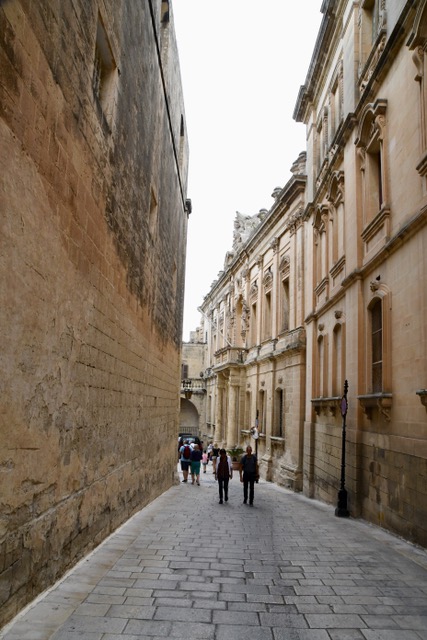




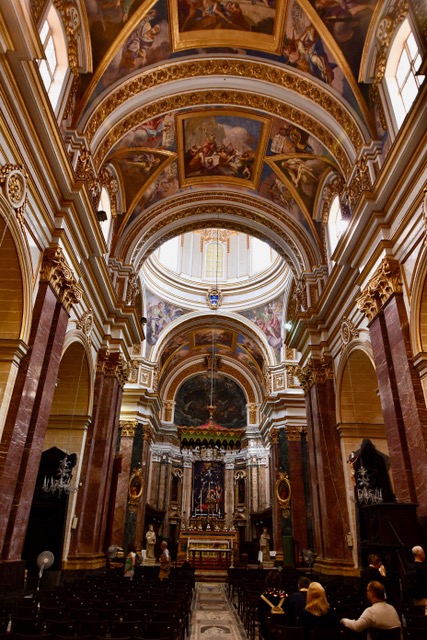


















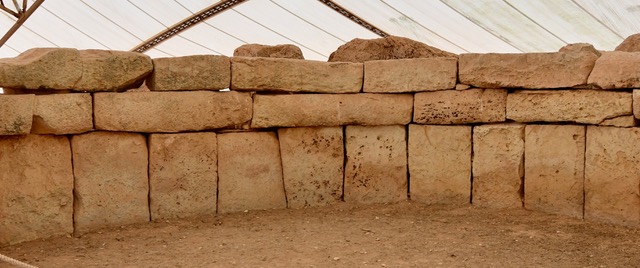








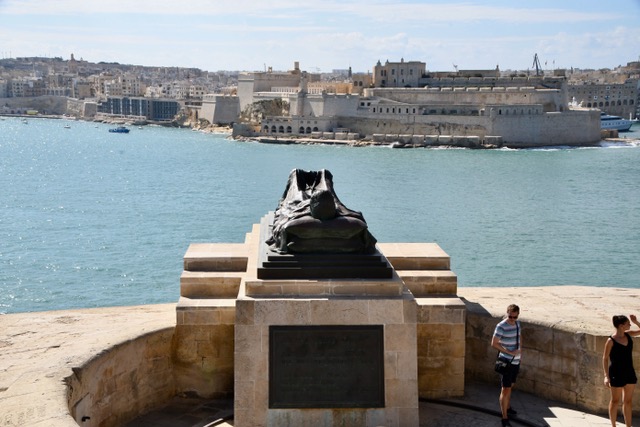















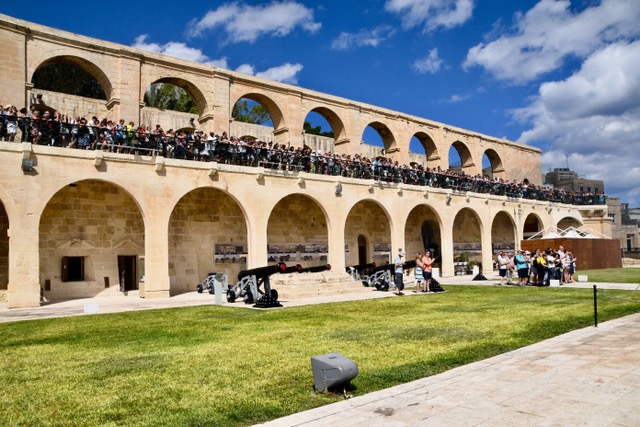


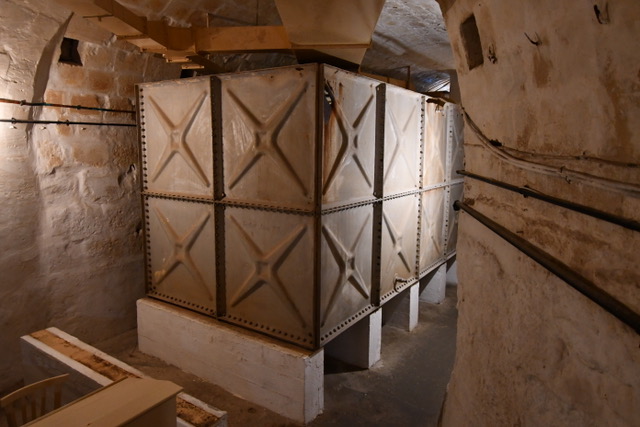










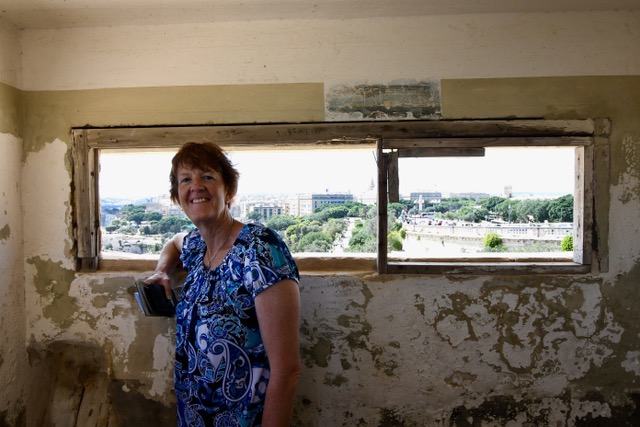


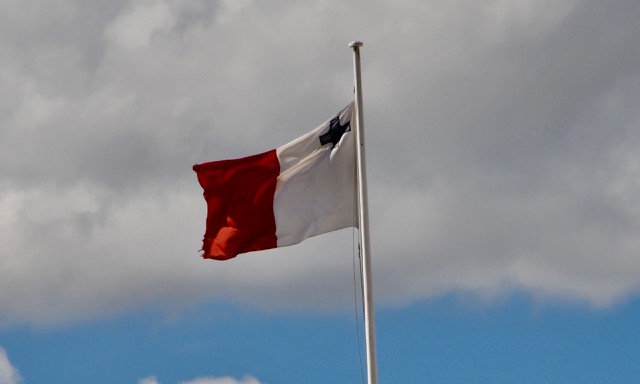


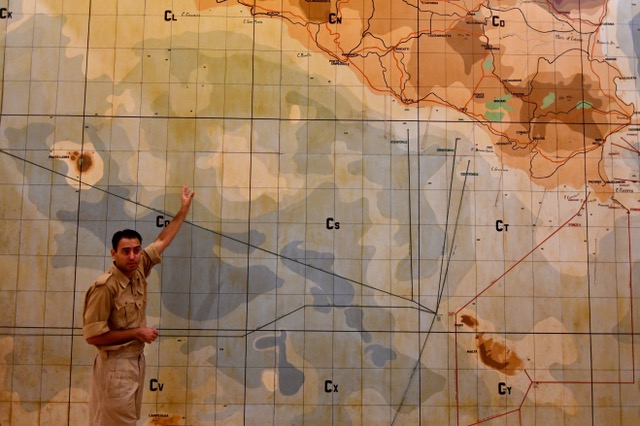


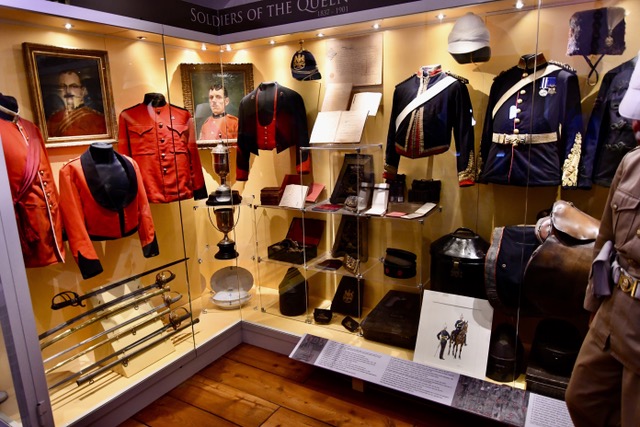
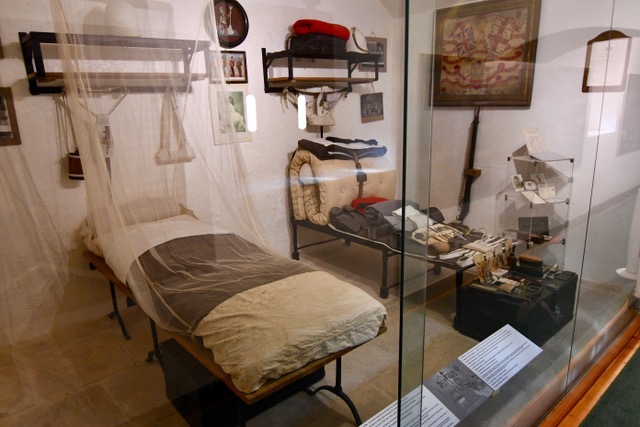










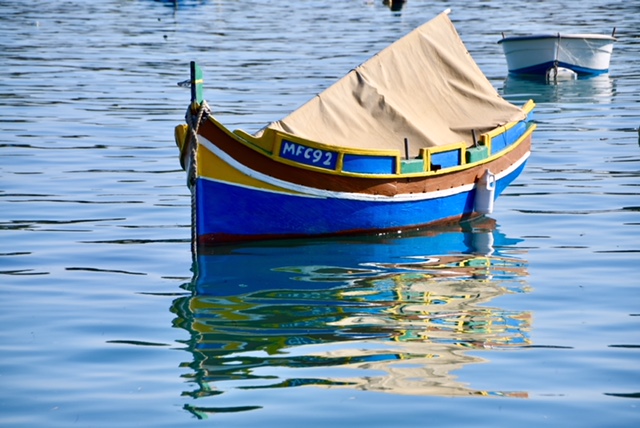






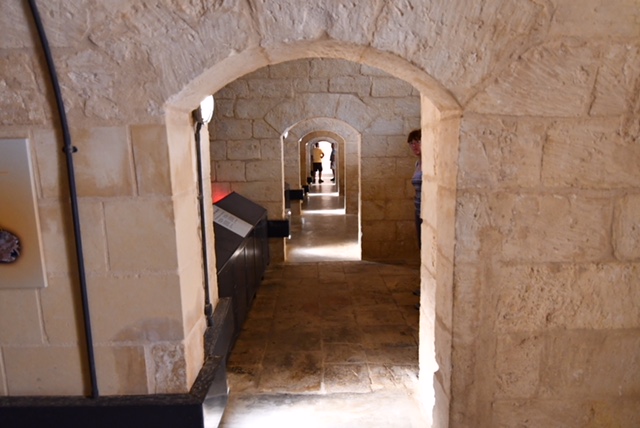
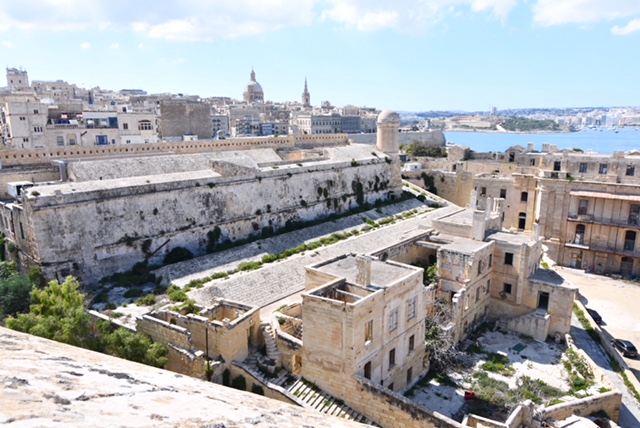

Great account again. Thanks guys. Interesting experiences with the bus driver and the Lufthansa airlines! Would have liked to have been a fly on the wall!!
Malta sounds like a place we would love to see.
Can’t imagine Sylvia ripping him a new one! haha!
So amazing. One place I have never been. So thank you for that log on Malta.